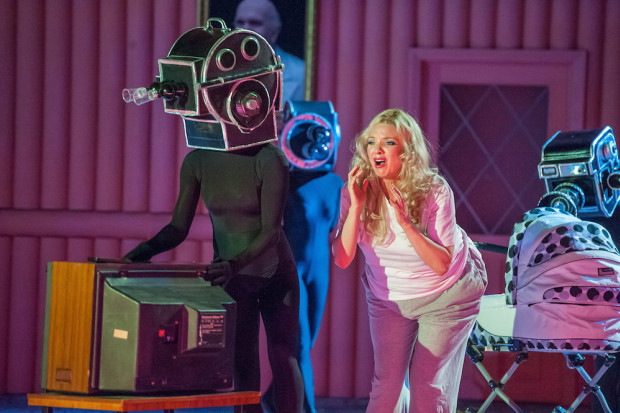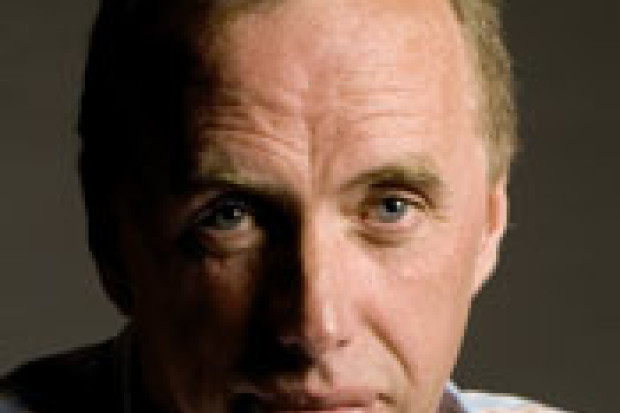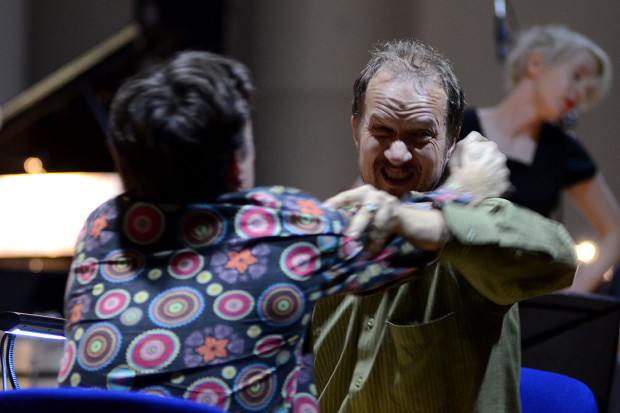Live Reviews: Up North! Rilke Ensemble Choir
Chapel Royal, Dublin Castle, December 2002. Jennefelt – Tableau Vivantes (2002); Eiríksdóttir – Vetur (1991); Ungæ∂i (1991); Olafsson – Endar mér í vilbessi arga og ramma kynngi? (1986); Seig í björg ni∂ri í blakka eyju (1986); Rehnqvist – Davids Nimm (1984); Walshe – been in a room and a room and a room and a room (2002); Mäntyjärvi – Over hill, over dale (1997); Janson – Shakespeare-sonnet No. 76 (2000); Nørgård – Wie ein Kind (1980)
To begin with, a general observation about contemporary choral music: I have to note that of all the genres of new music, choral is the most polarised between traditional and modern and this is reflected in the programming of this concert. Also, the use of extended technique is most marked with choral music as, regardless of musicality, we are all capable of vocalisation.
The piece that opened the concert however is a perfect example of music that transcends my opening remarks completely. Nothing about Jennefelt’s piece seemed forced and the choir brought both poise and warmth to this music of subtle gestures. The first movement set the style: the music weaved between collective and soloistic textures, small groups of ostinati set against each other like a slow moving carillon. The music advanced as a succession of blocks, textual shifts subtle but definite. The third movement used the tutti choir for the first time with the levels of internal events simplified accordingly, while the fourth movement returned to the style of the first two finding still new and wonderful variations on the language. Each movement also brought a spatial element into play by redistributing the choir to mirror the form.
Perhaps the richness of the first piece cast an unfair shadow over its immediate successors, Eiríksdóttir’s two miniatures seemed light in comparison though beautifully performed and undoubtedly pretty. The melody and accompaniment form came across as archaic.
The next two pieces took an even more traditional stance with madrigalian word painting and drone accompaniments although the second piece had an arresting bass ostinato hovering between singing and speaking. Again, these pieces though well performed had no place in a festival like this when they could easily have been programmed at any of the numerous traditional choral festivals around Europe.
A reduced Rilke of three sopranos stepped forward for Davids Nimm. This piece used the technique of singing the words backwards: Rehnqvist’s consistent application in a coherent language raises this above the level of gimmickry. The melodic material, based on Swedish folk music, is obscured by both the strangeness of the vocal timbre and the close counterpoint which after a period of knot-like stasis slowly ascends to a histrionic climax on two repeated chords. The much shorter second section maintained the language but darker and slower, pitting one voice against the others almost as a commentary: now mournful rather than agitated.
It’s difficult to talk about Walshe’s festival commission without being dogmatic. Her music always attempts to communicate actively on levels that are normally left to the subconscious, with psychological, visual and spatial elements being intrinsic parts of her language and as such it defies pigeonholing. This piece is a sequence of sound events that include sung notes, acted gestures (crying, etc.), body percussion, a mass of different textures that integrate or collide with each other as required. The first section works well and draws one into a world of stylised humanity, but then the lights go down and the considerably longer second section, feels, perhaps intentionally, as though it has become stuck. The Rilke choir possibly didn’t go as far over the edge in their vocal gestures as the composer would have wished. A piece that definitely requires to be seen (and heard!) again.
The Mäntyjärvi and the Janson were both examples of lyrical choral writing in a relatively traditional style.
Per Nørgård’s piece, while using a softer musical language here than in his other works, is explicitly not a traditional piece. The outer movements of the ABA form set the nonsense text to ostinati almost African sounding with swooping cries sounding occasionally through the first. The middle movement made less of an impression as it moved away from the beautiful sound world of the first without offering anything in it’s place while the third returned to the original texture as a male soloist tries and fails to mimic the rest of the choir; a more playful side to Nørgård than I have hitherto come across.
The concert ended with a short improvisation that began like Ligeti’s Lux Aeterna and morphed into an nineteenth century hymn. Overall, a most impressive performance.
Published on 1 January 2003
Scott McLaughlin is an Irish composer.














